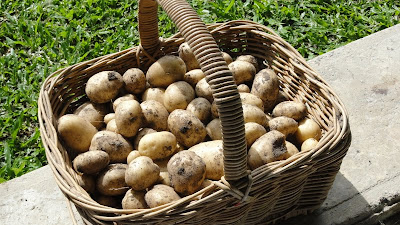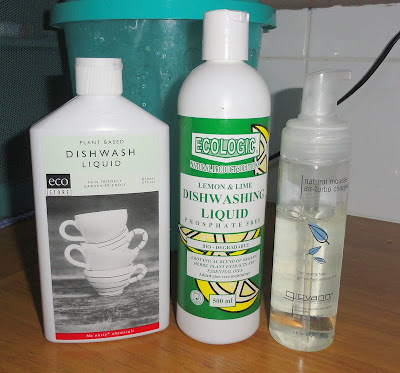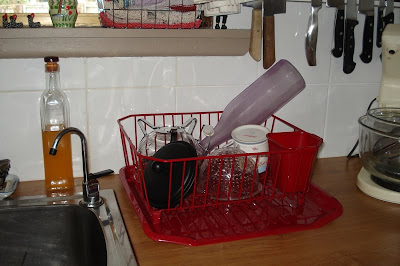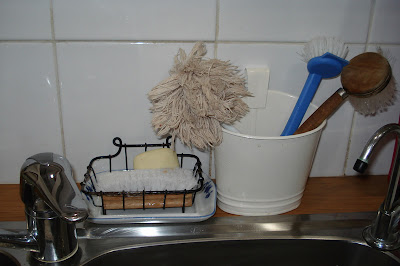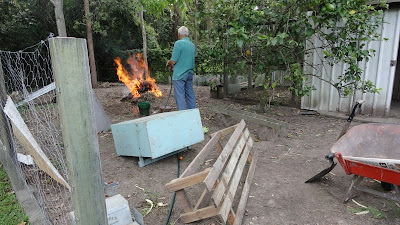I'm often intrigued by the questions asked in emails, particularly when they're about the most simple things. It always reinforces for me the need to learn new skills correctly and for that reason I never tire of explaining the most simple of tasks. The other day, Matthew asked how to hang washing on the line and if there are any tricks or ways of doing it well.

With many simple household tasks, knowing the right way to do something, and consistently doing it that way, results in jobs being carried out efficiently and before you know it, it becomes second nature to you. I remember when I first decided that making the bed every day was important to me. It seemed like a big thing to give that time every day to just making the bed. Now, after years of making sure the bed was just right every day, it seems like a tiny commitment to a very small task. Now it's just part of what I do.

One of the other small things we do here is to hang washing on the line to dry and as I often think about what I'm doing while I'm doing it, I have formed a few opinions about this simple task. It is common practice in Australia to line dry. It's been done that way since we Europeans arrived here and it's still the most frugal and effective way. Generally we have good weather, ideal for drying and a line of clothes set out early in the morning will be ready to bring in after lunch. Luckily, Hanno built me an all weather line too, so in addition to our Hill's hoist, that umbrella shaped Australian icon, I can quickly line dry clothes on our back verandah, even when it's raining.

When the washing machine finishes the cycle, take the clothes out immediately and head out to the line. If you leave the washing in the machine, or in your washing basket, for a period of time, you'll have more creases than is necessary. The thing that makes the most difference when hanging washing is to shake and snap. I mean by that to shake the item and give it a sharp hard whip snap before you peg it up. You'll remove some of the wrinkles in cotton and linen, and with terry towels, it will help fluff up the pile. When you remove towels from the line, shake them again to fluff up the pile. When you peg the item to the line, smooth it out with your hand and make sure the edges are straight. You don't want the hem of a skirt or a shirt sleeve to be crumpled up. Straighten and smooth collars, sleeves, facings, pockets and hems before going on to the next item.
Peg towels, tea towels, pillowcases and napkins by two opposite corners, shirts and blouses upside-down on the side seam, jeans (with the zipper undone) and skirts by the waist, and dresses on the shoulder seam. Hang sheets, tablecloths and doona|duvet covers by the two top corners in one layer, then make a U shape and peg the bottom corners to the line behind it. This will create better drying conditions for these large items and sometimes, the wind takes up the sheet like a sail and if you're using a circular line, it will spin the line around. If you have enough room and sturdy coat hangers, you could hang dresses, shirts and anything permanent press on a coathanger and peg it to stop it slipping along the line. Traditionally, socks and underwear are hung near the centre of the line and hidden by the larger items. I have to confess I still do this. If you're using a straight line, hang the heavy items first at the ends of the line, where there is more support, and fill in the middle with the smaller items.
If you have brightly coloured or black clothing, turn them inside out to help prevent fading but all your whites will benefit from drying in the sun because it will have a slightly bleaching effect.
Never hang woollens or any natural fibres like alpaca in the sun. They should be laid out flat on a large towel and dried in the shade.

I use plastic pegs but I like wooden pegs better. Here in our climate, the wooden pegs go mouldy and often end up marking the clothes. Plastic pegs will serve you better in humid or moist climates. And don't do what we do here and keep the pegs on the line. It's best to store plastic pegs out of sunlight, they'll last much longer if you take care of them.
If you intend to iron anything you have hanging on the line as soon as it's dry, remove it when it's still slightly damp. That will make ironing easier. For the rest of it, fold each item before it goes in the basket, or if you don't want to stand in the sun too long, as soon as you go inside the house.


















